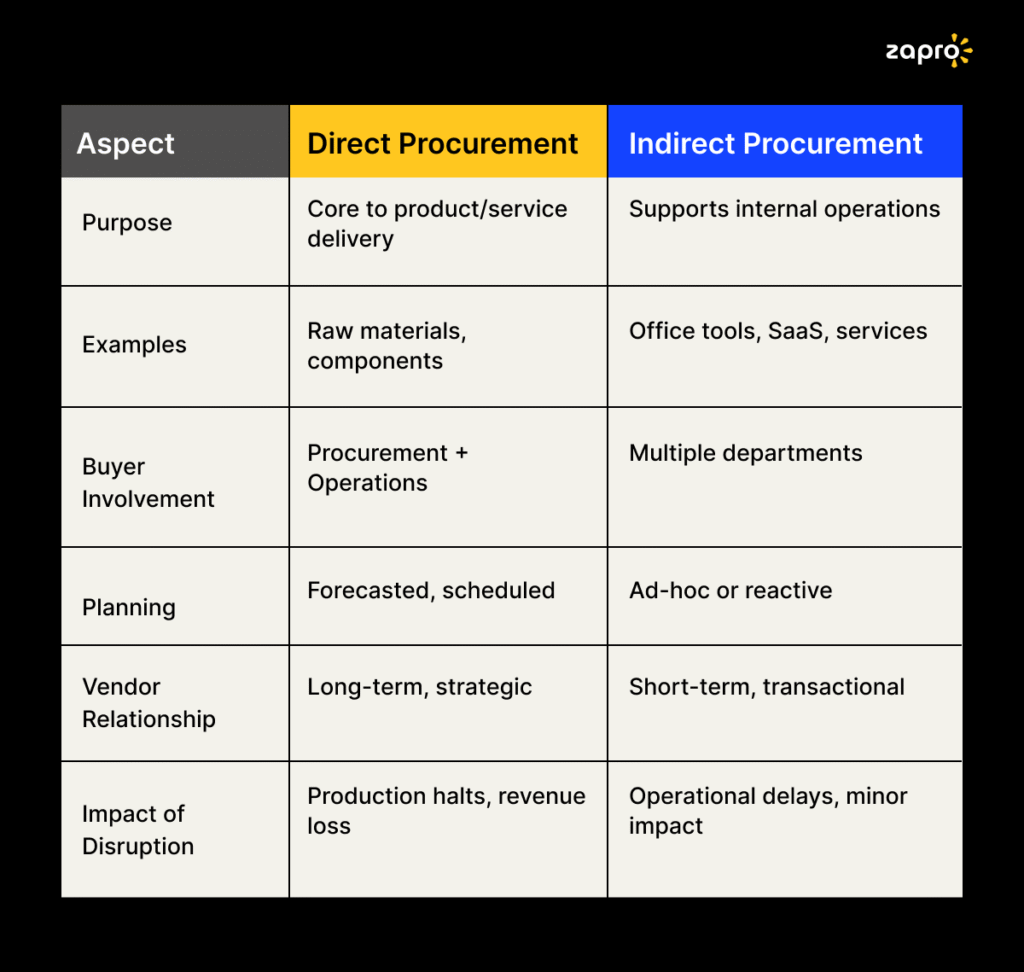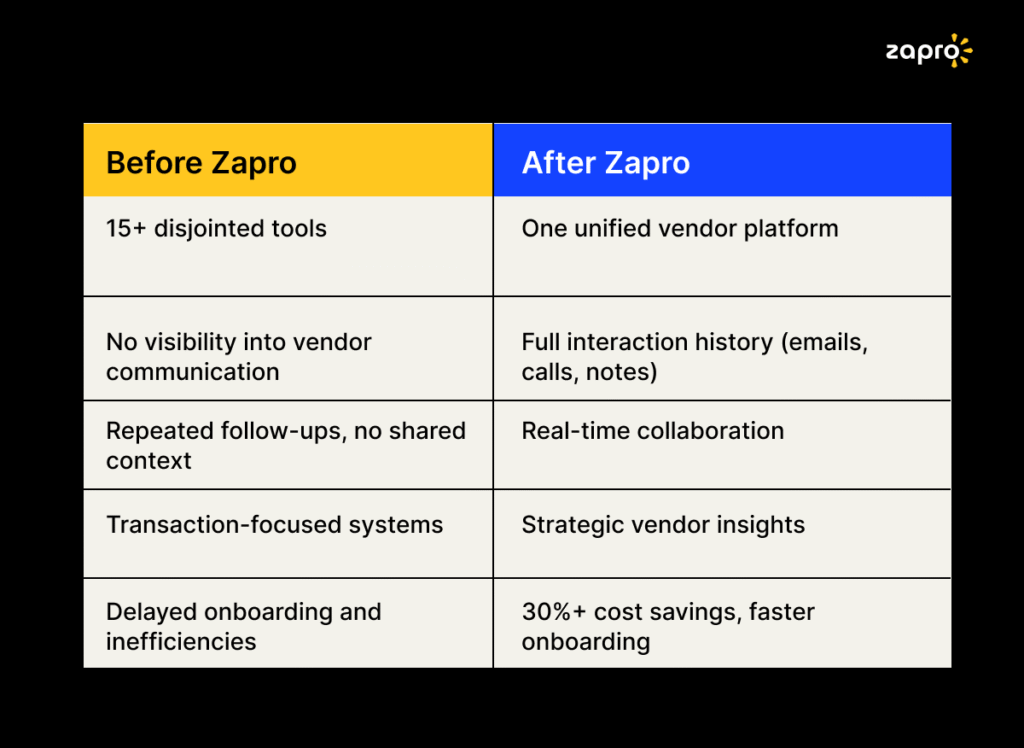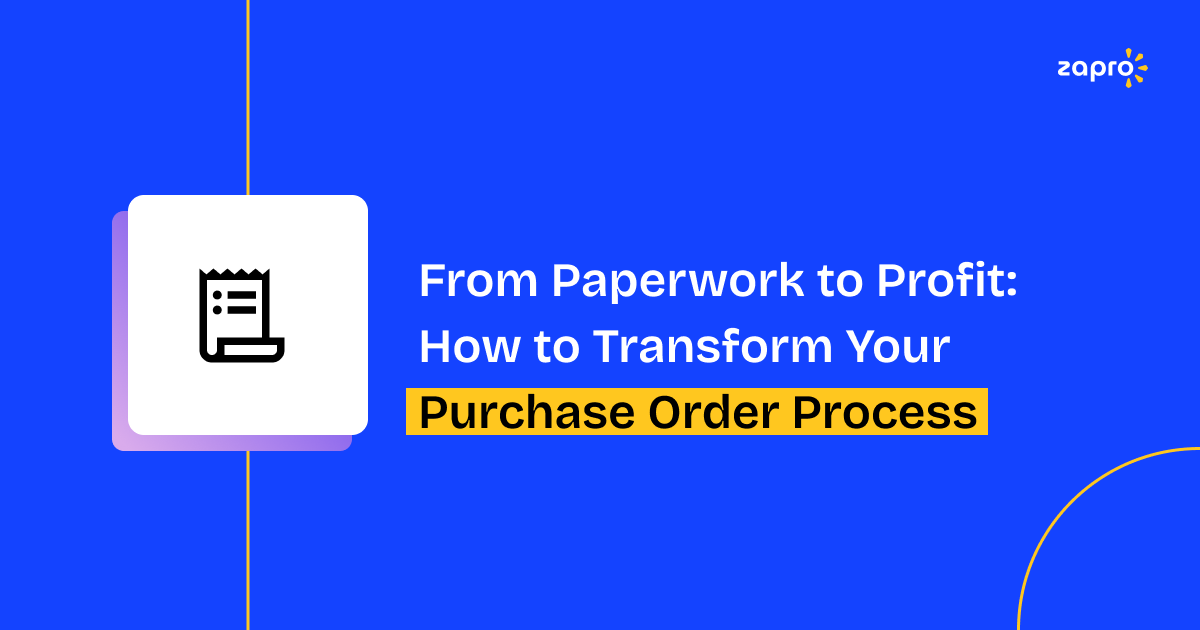Procurement plays a key role in keeping your business running; from it’s securing raw materials for your products or stocking up on everyday office supplies. But here’s the thing: not all procurement works the same way.
It generally falls into two buckets: direct procurement covers what you need to create your core product or service.
On the other hand, there’s indirect procurement that takes care of everything that supports your internal operations.
This distinction isn’t just technical; but it impacts how you budget, manage suppliers, assess risk, and plan for the future. Treating both the same can lead to inefficiencies and missed opportunities.
In this blog, we’ll break down the difference between direct and indirect procurement and why understanding both is key to building a smarter procurement strategy.
What is direct procurement and why it matters?
Direct procurement means acquiring the goods, materials, or services that are integral to your product or core operations.
It’s the raw ingredients that your business cannot do without, think flour for a bakery, metal sheets for a manufacturer, or servers for a cloud services company.
Here’s why it deserves your close attention:
- Direct impact on revenue and quality
Direct procurement often accounts for over 60–80% of total spend in manufacturing industries, meaning it’s central to your cost structure and product performance. - Strategic supplier collaboration
These suppliers are more than vendors, they’re partners. You negotiate pricing, delivery, quality, and innovation through long-term contracts and close coordination with production teams.
| Pro Tip: Track lead time and defect rate as core procurement KPIs, these reveal supplier reliability and quality issues before they disrupt operations. |
- High stakes, limited margin for error
Even minor disruptions, like a delayed delivery or quality slip, can halt production lines and erode margins. - Opportunity for big savings
Because direct spend makes up so much of total procurement budgets, even a 1–2% optimization translates into substantial dollar savings. - Essential for ESG and compliance goals
Sustainability is no longer optional. Procurement strategy increasingly weaves in ESG criteria, from carbon footprint to responsible sourcing, to guide direct supplier selection and operations.
| Expert note: According to supply chain leader Remko van Hoek, strategic sourcing is all about supplier relationships, innovation, and long-term performance, elements that matter most in direct procurement |
What is indirect procurement?
Indirect procurement is the process of sourcing goods and services that support business operations but don’t directly contribute to the final product or service. These purchases keep your internal teams productive and your infrastructure running reliably.
You’re looking at things like:
- Office supplies and IT equipment
- Facility maintenance and utilities
- Cybersecurity services and SaaS subscriptions
- HR tools, payroll systems, and employee training
- Professional services like legal, consulting, and marketing
While these costs don’t appear in your bill of materials, their impact is real. Indirect procurement system influences:
- Operational continuity
- Employee experience and productivity
- Internal compliance and cost control
- Overall business agility
In service-heavy sectors like healthcare, banking, and SaaS, where the “product” is mostly intangible, indirect procurement system often takes center stage. It sort of determines how effectively teams can deliver value to customers.
Managing indirect procurement can be tricky.
It’s usually decentralized, spread across departments, and filled with smaller, recurring purchases. Without clear visibility, it’s easy for costs to spiral and compliance to slip.
| Stat: According to Gartner, organizations that centralize indirect procurement reduce total indirect spend by up to 15%, simply by eliminating maverick buying and consolidating suppliers. |
In short, indirect procurement may work behind the scenes; but it plays a front-line role in ensuring your teams are equipped, connected, and compliant.
Learn about procurement vs purchasing.

Organizations that strategically manage indirect procurement achieve cost savings 20-30% higher than those focusing solely on direct procurement.
Key differences between direct and indirect procurement
While both direct and indirect procurement play essential roles in keeping a business running, they serve very different purposes and require distinct approaches.

Here are the key areas where they differ:
1. Purpose and impact
Direct procurement involves inputs directly tied to your product or service. Without it, the business can’t deliver value to customers. Indirect procurement supports internal functions. You can think of it as enabling the business to operate smoothly, not produce.
2. Vendor relationships
Direct procurement relies on stable, long-term partnerships with suppliers to ensure consistent quality and delivery. Vendor performance can make or break your product. But, indirect procurement is usually more transactional, with shorter-term contracts and multiple interchangeable vendors.
3. Planning and forecasting
Direct spend is tightly linked to production schedules and customer demand. It requires accurate forecasting, planning, and alignment across procurement, operations, and finance. Indirect spend, by contrast, is often ad-hoc or reactive driven by internal requests or evolving needs.
4. Budgeting and control
Direct procurement is usually part of structured, annually reviewed budgets. Indirect procurement tends to be decentralized, with spending spread across departments. It makes it harder to track, control, and optimize without the right tools.
5. Inventory management
Inventory control is central to direct procurement; companies maintain stock levels, buffer inventory, and safety margins. Indirect goods are rarely stocked in the same way; they’re typically purchased as needed, without long-term inventory planning.
6. Risk exposure
Supply disruptions in direct procurement software can halt production and affect customer delivery. Indirect procurement carries operational risks, like delays in onboarding or outages, but rarely impacts revenue directly.
7. Digitalization and automation
Indirect procurement is often the first to be automated through procurement tools due to its volume and repetitive nature. Direct procurement, on the other hand, requires more customization and integration with production systems.
8. Stakeholder involvement
Direct procurement involves cross-functional collaboration with production, R&D, and quality assurance. Indirect procurement is driven more by internal service departments, like HR, IT, and admin, but each with different priorities and processes.
Learn about best procurement software.
To Summarize:
| Aspect | Direct Procurement | Indirect Procurement |
| Core Purpose | Acquires materials/services tied directly to the company’s offering | Supports internal operations and functional needs |
| Examples | Raw materials, components, packaging, manufacturing services | Office supplies, software tools, travel, facility services |
| Frequency of Purchase | Recurring and volume-driven | Irregular or one-off purchases |
| Typical Buyers | Procurement + operations + production teams | Departmental heads (IT, HR, admin, marketing) |
| Budget Ownership | Centralized, tied to cost of goods sold (COGS) | Decentralized, part of departmental budgets |
| Impact of Disruption | Can halt production and affect customer delivery | May disrupt internal efficiency but rarely impacts customers directly |
| Key KPIs | Cost of goods sold, supplier lead time, quality compliance, inventory turnover | Cost savings, process efficiency, request-to-approve cycle time |
| Supplier Relationship | Long-term, strategic partnerships | Often transactional and price-sensitive |
| Compliance Requirements | Strict regulatory, technical, and quality standards | Focus on policy compliance, spend thresholds, preferred vendor usage |
| Supplier Lifecycle | Longer onboarding, extensive vetting, contract negotiation | Faster onboarding, simplified approvals |
| Digitalization Priority | Tailored systems integrated with production (e.g., ERP + MES) | More suited for automation through e-procurement platforms |
| Inventory Strategy | Safety stock, just-in-time (JIT), demand forecasting | Minimal inventory, usually procured on demand |
Zapro – One platform for everything procurement
Understanding the difference between direct and indirect procurement isn’t just a technical detail, it’s essential to building a resilient, cost-efficient, and well-orchestrated business. Whether you’re managing raw materials for production or coordinating software renewals across departments, the one constant is this: modern procurement needs more than just POs and invoices. It needs visibility, collaboration, and control.
That’s exactly where Zapro comes in.

Instead of juggling 15+ disconnected tools, like spreadsheets, sourcing platforms, contract systems, email chains, and document drives, Zapro brings everything into a single, unified workspace.
It replaces:
- Spreadsheets for vendor tracking
- Shared inboxes for communication
- CLM tools for contracts
- eSourcing platforms for RFQs
- Google Drive or SharePoint for documents
- Separate risk and compliance tools
- Even third-party risk management software like Vanta, by centralizing all your vendor interactions, documents, and audit trails in one place
Think of Zapro as a CRM for your suppliers, purpose-built for procurement teams. It helps you:
- Cut onboarding time in half
- Track every touchpoint—emails, calls, contracts, issues
- Flag risky or unreliable vendors early
- Enable smoother collaboration across procurement, finance, legal, and ops
In short, Zapro turns procurement into a strategic advantage. It gives you full control over both direct and indirect spend, while quietly eliminating complexity behind the scenes.
If you’re ready to move beyond fragmented processes and unlock the full potential of procurement, Zapro is your next step forward.
Master Both Direct and Indirect Procurement — Start Saving Smarter Today!

Don’t miss our weekly updates
We’ll email you 1-3 times per week—and never share your information.

 Healthcare
Healthcare Financial Services
Financial Services Technology
Technology Venture Capitalist
Venture Capitalist Chief Procurement Officer
Chief Procurement Officer Chief Financial Officer
Chief Financial Officer




